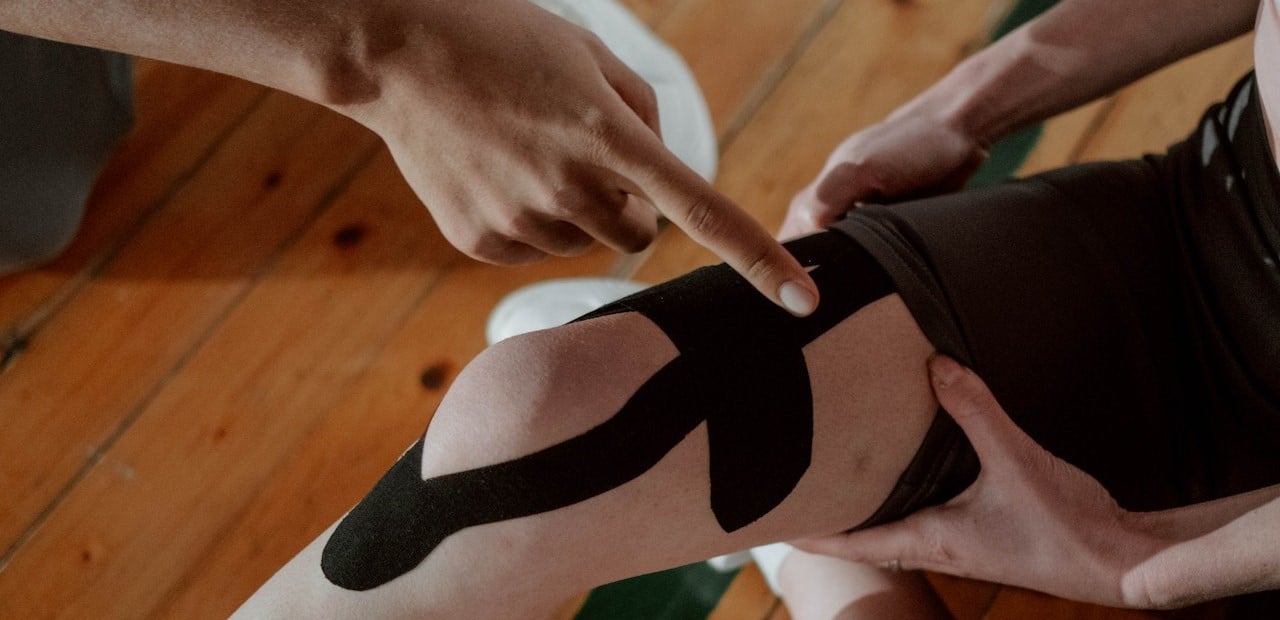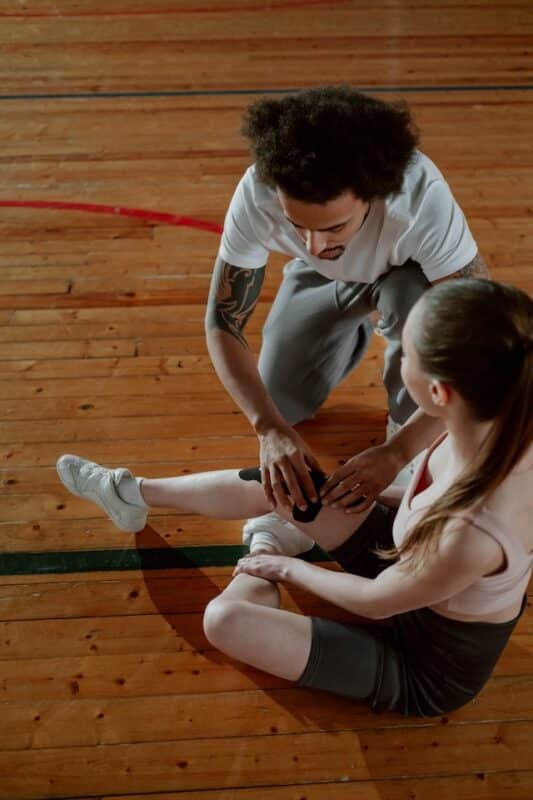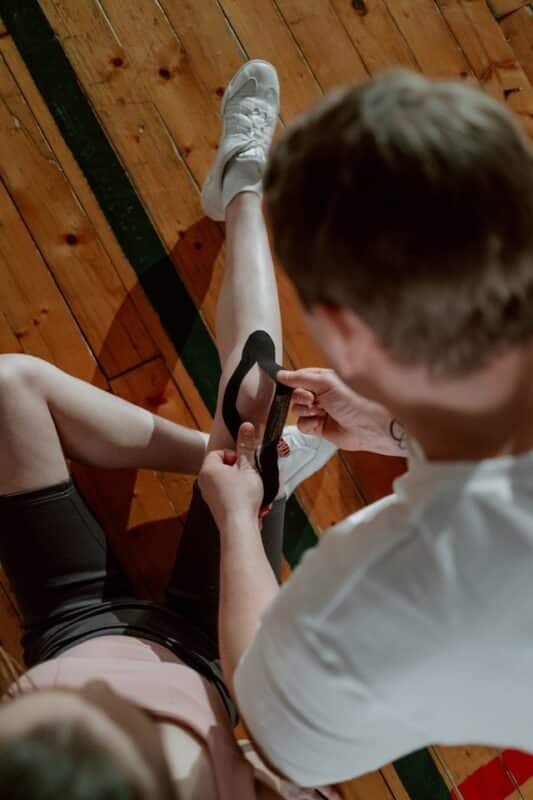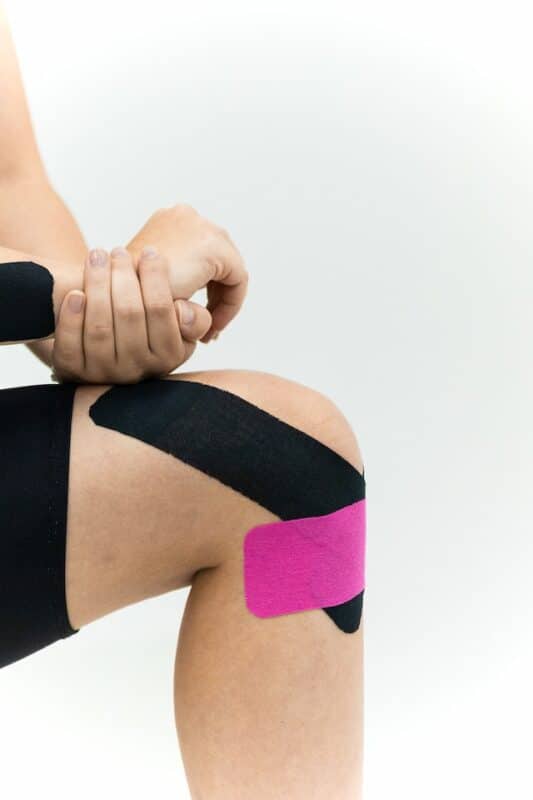
Contents
Using support techniques to help handle knee pain, anterior knee pain, and runners knee via knee-taping techniques
Knee pain is a… pain. And we all could do without. In fact, the most common injuries in runners have something to do with the knees. If a runner catches an issue, maybe it’s connected to the quadriceps tendon, or maybe it’s a cartilage issue, then they could be out of the game for good.
While injuries are common and very difficult to avoid, there’s no reason that an injury should affect your game in such a way, unless, of course, it’s severe or… you haven’t done all that you could to prevent something. With knees, there’s a classic way of helping reduce risk. Knee taping is a killer way to prevent knee injury so let’s dig deeper. There’s always more than meets the eye –
So how much more can there be to knee taping than just wrapping your knee with tape?
Full knee cap support with kinesiology tape
Kinesiology tape is a common form of tape to combat knee issues. In essence, kinesiology taping utilises the stretchiness of the tape to cover a wider area whilst offering brilliant support and stabilising joints too.
Full knee cap support is super useful for patellofemoral pain syndrome (knee cap pain).
Check out Healthline’s instructions on using kinesio tape
- ”Measure from the tibial tubercle (bump under your kneecap) to your quadriceps tendon. Cut two tape strips of equal length. Round the ends to minimize peeling.
- Sit on a bench and bend your knee. Peel the first inch of one strip. Secure outside the tibial tubercle without stretch.
- Stretch the tape to 40 percent. Wrap the tape around the inner knee, following its natural curve. Secure the end without stretch. Rub the tape to activate the adhesive.
- Repeat with the second strip along the outer knee, crossing the ends to form an X.
- Cut a strip of tape long enough to wrap under the kneecap. Straighten your knee slightly.
- Peel the tape from the center. Stretch to 80 percent and apply under your kneecap. Wrap the tape along your hamstrings and secure the ends.”



Anterior knee pain
In the front and centre of your kneecap, you’ll find a specific kind of knee pain. Sometimes, it’s not all of the knee cap, like the above issue, and so a more targeted approach is needed.
This type of knee pain is usually caused by arthritis. While you can use the above method, to target more specifically, let’s look at the pre-cut Y-shaped tape. For this one, get two Y strips of tape. Again, check out Healthline.
- ”Cut the long Y strip to 1 to 2 feet. Sit on the edge of a bench, knee bent.
- Peel the first inch of tape. Secure in the middle of the thigh. Split the Y and remove the backing.
- Stretch the tails to 25 to 50 percent. Apply on each side of the kneecap. Rub to activate the adhesive.
- Peel the first inch of the small Y strip. Secure on the outer side of the kneecap, split the Y, and remove the backing.
- Stretch the tails to 50 percent. Apply the tails above and below the kneecap. Rub to activate.”
Conclusion
Great stuff, two different methods but pretty similar in reality. Check out the two links from the awesome Healthline for more info.
FAQs
What is runner’s knee?
There are many different reasons why someone may think they have ‘runner’s knee’, but it’s generally arthritis and/or general pain of the whole knee cap.